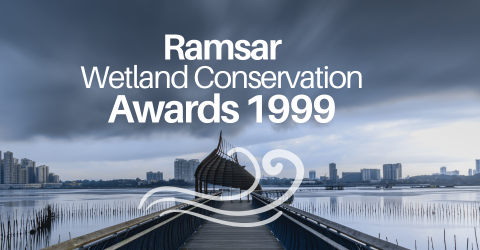
NGO Award 1999 - Society for the Protection of Prespa
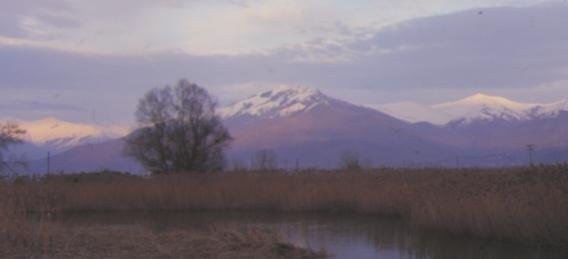
Society for the Protection of Prespa, Greece
The activities of the Society for the Protection of Prespa provide an outstanding example of a pioneer approach to wetland management and cooperation at local, national and international levels for the sustainable management of a Ramsar site -- a Ramsar site at which the situation had been sufficiently serious for inclusion in the Montreux Record.
Prespa is situated in northwestern Greece, at the border with Albania and The Former Yugoslav Republic of Macedonia. The area consists of two lakes, Mikri Prespa and Megali Prespa, and the surrounding forested mountain slopes. It is best known for its natural beauty, its great biodiversity, and its populations of rare waterbirds, but it is also remarkable for its cultural values, including Byzantine monuments and examples of traditional architecture. The Ramsar site "Mikri Prespa" covers an area of ca. 5,000 hectares and was included in the List of Wetlands of International Importance among the first Ramsar sites, in 1975.
Founded in 1991, the Society for the Protection of Prespa (SPP) is a federation of seven Greek environmental organizations and three from elsewhere in Europe. Its mission is to conserve Prespa’s natural environment and cultural heritage as well as to promote sustainable development. The SPP’s activities are carried out under the responsibility of scientists living permanently in the area and by local people who have been trained by the SPP.
Achievements of the SPP to date include:
- Conservation work, the rescue of a breeding colony of Dalmatian pelicans and an action plan for an endemic fish species, carried out in conjunction with information campaigns and efforts to propose alternative economic activities to local communities affected by restrictions brought about by these conservation efforts.
- Successfully gaining the participation and involvement of all sectors of the local community (1300 people in 12 settlements) in planning the future of Prespa. SPP is providing advice and help to local communities to achieve sustainable management of the area’s resource; e.g., technical assistance has been provided to farmers to help them gain organic certification of their products and promote their traditional products and crafts.
- Emphasis upon public awareness and education. A first information centre for visitors, especially for schoolchildren, was established in 1992, and a second was opened in 1995 dedicated to the fisheries and fish of Prespa, at both of which environmental education and training programmes are held and publications developed.
- Establishing contacts with Albania and the FYROM to promote integrated basin management around this transfrontier site.
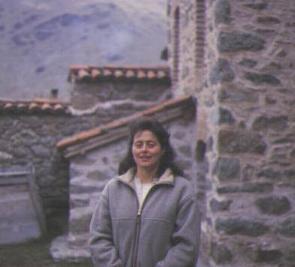
An interview with Myrsini Malakou, Managing Director of the Society for the Protection of Prespa (SPP)
By Alexandra Chaini, Press Officer, WWF Greece
January in Prespa. The snow has just melted and the temperature has stopped - at least for the time being - at 5§ C. Nonetheless, most birds are already traveling to warmer climates. Only some Great White Herons, Cormorants, and Pygmy Cormorants fly carefree over the reedbeds or feed in the wet meadows under the inspection of the water buffaloes.
It is here at the crossroads of three countries, the very northwestern part of Greece, Albania, and the former Yugoslavia, that the Society for the Protection of Prespa (SPP) is trying actively to preserve the qualities of the area.

A. Chaini: When was the biodiversity of Prespa first taken into account?
In 1967, two French ornithologists, J. F. and M. Terrasse, visited the area and recognized the wildlife potential of Lake Mikri Prespa. In 1970, at the Greek government’s request, IUCN-The World Conservation Union engaged three international experts on nature to report on the protection of important natural areas in northern Greece. This team, L. Hoffmann, W. Bauer and G. Muller, recommended the creation of a National Park in Prespa.
AC: That is how Prespa was included in the Greek Ramsar site list?
Yes, after their report and the concerted lobbying by the Hellenic Society for the Protection of Nature, the government officially declared Prespa a National Park and a "Ramsar" site in 1974. In the years that followed, many scientists visited Prespa and the knowledge of the area’s ecological and cultural wealth soon spread throughout Europe. However, due to the fact that the decision for the protection of the area was taken without any previous discussion with the local people, conservation to them related not only with prohibitions and/or restrictions to their activities, but also with a loss of control in any decisions made for their future.
AC: So there were problems right from the very beginning?
Definitely. The establishment of the Park was accompanied by only two prohibitions. The first was the lifting of the then-legal hunting of pelicans, which at that time was considered a threat to the fishermen. The second was the prohibition of the burning of the reedbeds - a practice which was used by the local people in order to increase the spawning grounds for fish and to manage the lake’s vegetation. There was no further progression of activities since then and consequently the Park was never organised and developed as it should be.
AC: You mean that the declaration of the National Park was just on paper?
Exactly. National Park status in Greece was given to forest areas which were usually uninhabited. Prespa was given this status as it was the only way to legally protect its natural importance. Prespa, however, is inhabited by 1200 people; thus conflicts and controversies appeared from the very beginning.
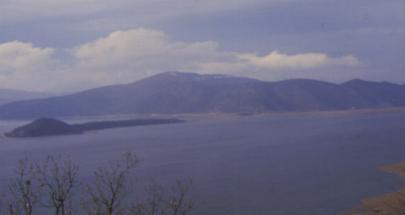
AC: And the state did not intervene at all?
The Greek state is supportive and interested in Prespa’s economic development. However, no real progress has occurred as far as the protection of the area and the development of the Park is concerned. Since local people’s attitudes were negative, no government ever tried to push things forward. In fact, this was the case for almost all the protected areas of Greece and not just Prespa.
AC: When did things become more focused?
In 1986 the EEC chose to co-fund a pilot development project in Prespa under the Integrated Mediterranean Programme. Unfortunately, poor planning and implementation caused serious and irreparable damages to the natural environment. Greek and European conservation NGOs, alarmed by these threats to the environment, organised campaigns and meetings at local, national and international level.One of the most important ones was the meeting "A Future for Prespa", which was conducted by WWF Greece and the local stakeholders of Prespa. At this time a critical role was played by G. Catsadorakis, a biologist who had settled permanently in the area. His continuous presence and communication with local people led to the creation of a local NGO, consisting mainly of local people, the "Prespa Centre for Man and Nature", which functioned as an information medium until 1991.
AC: Was the Prespa Centre for Man and Nature some type of a predecessor to SPP?
Actually yes. The initiative for the creation of SPP was taken by Luc Hoffmann, the Friends of Prespa, and WWF. Thus after a series of negotiations and proposals of all participant NGOs, the establishment of the Society for the Protection of Prespa was decided upon on 18 December 1990. At the same time the Ministry of Agriculture started preparing a Management Plan for the Prespa National Park. This would have been a positive measure but unfortunately the Ministry did not take into consideration the needs of the local population and tried to impose its decisions. This action infuriated local people and reinforced their negative attitudes against conservationists. Thus, we started off in 1991 in a rather hostile and negative environment.
AC: What are the principles of SPP?
Through the ages, the economic, cultural and ethical activities of the local people, i.e., the local people’s lives, developed strongly along with Prespa’s natural environment. The natural and cultural wealth of Prespa that we currently enjoy is closely related to the successful results of this more or less balanced coexistence and relation between Man and Nature. Thus SPP stressed that Prespa should be conceived of in an integrated way, i.e., that the natural, cultural and socio-economic values are all of equal importance. This message had to be conveyed to all different parties – local people, state, public services, as well as conservationists.
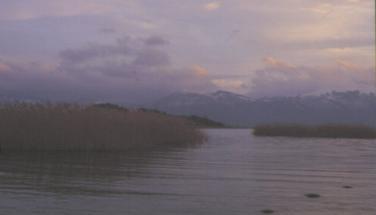
However, the holistic approach is just the base upon which you start the discussion about the future of an area. The second, more challenging issue was to pursue this holistic approach through specific practical initiatives. In fact that means that you have to find, test and promote those ideas which will finally preserve and continue the "balanced coexistence between Man and Nature". In order to achieve this, it is necessary to clarify at the very early stages your vision, your role, your limits and the procedures you want to follow.
For example, SPP always conducted a wide spectrum of activities through small-scale projects. In practice, equal importance was given to issues concerned with the protection of the environment as well as to economic development, cultural values, preservation of local architecture, etc. Local participation was a rule in all SPP’s programmes. On the other hand, it was always clear that SPP was not created in order to offer new job opportunities, but to help people learn how to explore these opportunities. SPP was never a patron but a colleague. All activities initiated by the SPP had an expiry date. In other words, projects that we initiate would eventually be continued by the locals. We had to make the locals as well as the conservationists realise that we were fighting in order to preserve the beauty of life in Prespa and not just a rare species.
AC: Which leads us to your vision of the SPP in the future.
It is a prevailing wish and not a real vision ‘to be able to give to the next generation the wealth that has been delivered to you by all the previous human generations’. Our vision has to do more with a procedure than with a specific countable target. It is to motivate and persuade all stakeholders to be concerned for a common vision for the future of this area and their lives.
AC: Let’s move to a more technical question now. In what way do the Society’s activities contribute to the implementation of the Convention on Wetlands?
The Convention on Wetlands promotes the conservation and wise use of wetlands. The Society builds up the conditions for its implementation, which is in fact the responsibility of the State as well as of the local people. As far as the SPP projects are concerned (e.g., the protection of the pelicans and the management of the wet meadows projects), they definitely meet directly with the Convention’s principles.
Prespa was, and in a way still is, a more or less isolated and remote area not only from a geographical point of view but also culturally and socio-economically. Until the late 1970s, the economy of the area was dependent on a wide spectrum of extensively implemented activities of the primary sector. This was beneficial to wildlife. Since then intensification, specialisation and dependence upon outside sources increased. Thus, although the needs of everyday life were increased, diversity in human activities decreased along with biodiversity. The SPP initiated programmes for the promotion of mild development activities, such as organic agriculture. It has also tried to push for an increase in diversification in human activities. In addition, Prespa is shared between three countries and the SPP has initiated cooperation in order to promote conservation as well as economic development measures for the area. Certainly in all our efforts we collaborate with local authorities and the public sector.
AC: Collaboration with the local authorities. and their successive adoption of projects, describe the Society’s plans for the future, then?
Yes. The SPP has now achieved closer collaboration with the local authorities, something which has led to larger-scale projects which are funded and managed by the State. We’ve been trying for a long time to bring together environmentalists, local societies and the State. Now that we have all finally sat at the same table, we have to work on larger-scale projects – a difficult task since we can no longer be in charge of the procedures. The SPP’s role remains the same, i.e., facilitative and consultative. This role has a drawback as we can easily be blamed for the failure of a certain proposal which the SPP has initiated but actually has no responsibility in its implementation. However, the situation has now improved, with many misunderstandings having been resolved so that things can be developed in a much better way.
AC: Do you think that the Ramsar Award will help you?
The award is the recognition of the common efforts of the local population and the SPP forPrespa. It is an award that belongs to all the people who are genuinely concerned for Prespa.
January in Prespa. And on the eve of the new millenium, the mountains embracing the lakes remain the same as years go by. Up here only people change. And consciences.
Athens, 15 January 1999
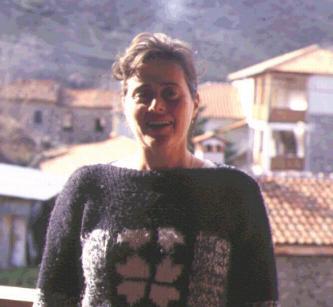
Myrsini Malakou: a brief CV
Birth Date: 4/12/1960, Lesvos island
Studies: Biology, University of Athens, Greece
Working experience: 1978-88: she participated in conservation projects in Greece (basically mammals and birds). She has been working and living in Prespa since 1988.
Other people working at SPP:
- Yvonne Tsirogouni / Finance
- Despoina Mertzanidou / Environmental Education
- Georgia Konstantina Boutou / Public Relations & Communications
- Foteini Vakitsidou / Env. Education, Eco-tourism
- Lazaros Nikolaou /Eco-tourism, Env. Education, Phalacrocorax pygmaeus project
- Charis Nikolaou /
- Eleftheria Patsea / Secretary
- Nikos Nikolaou / Guard at the Phal. Pygmaeus project
- Giannis Kazoglou / Wet Meadows project
- Kostas Bakalis / Water Buffaloes
- Kaiti Kapouraki
- Christina Reppa Information Centre
- Marina Vidinou
- Maria Kiriazi
SOCIETY FOR
THE PROTECTION
OF PRESPA
AG. GERMANOS, PRESPA
53077 AGIOS GERMANOS, GREECE
TEL./FAX: (0385) 51.452
PRESPA
Prespa is situated at the northwestern part of Greece (Western Macedonia), at the borders with Albania and the former Yugoslavia. It has an area of 30,000 ha lying on a mountainous plateau at an average altitude of 1,000 m a.s.l. The area consists of two lakes Mikri Prespa (4,850 ha) and Megali Prespa (28,000 ha) and the surrounding forested mountain slopes with peaks reaching 2,334 m a.s.l. in height.Photo: Agios Germanos, Prespa, Greece
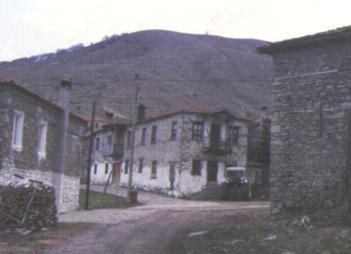
The area is known because of its natural beauty, its great biodiversity and the populations of rare waterbirds. Specifically, in Prespa there exist more than 1,500 species of plants - among them two endemics - 12 woodland types, more than 40 species of mammals (among them the rare brown bear, wolf, otter, chamois), 11 species of amphibians, 22 species of reptiles and 17 species of fish (8 endemics). The avifauna is also remarkably rich: 260 species of birds have been observed at Prespa. Prominent are the populations of rare aquatic species, especially the two species of pelicans. Prespa is the only place in Greece and the European Union where the Dalmatian and White Pelicans breed together. Other rare waterbirds include six species of herons, Great Cormorants, Pygmy Cormorants, etc.
The cultural values of the area, such as the 26 Byzantine and metabyzantine monuments dating from the l0th up to the l9th century, the typical local architecture (two traditional settlements) and certain cultural particularities (unique fishing methods, domestic animal breeds), are also remarkable.
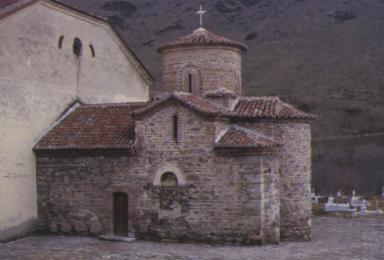
Prespa is the only place in Greece which is protected under 50 many national, European and international laws and conventions. Since 1974 the area is protected as a National Park, as a Wetland of International Importance under the Convention on Wetlands, as a Landscape of Exceptional Natural Beauty, and as an area Important for Birds under the 79/409 EEC Directive. Prespa National Park is the largest National Park in Greece and it also has the highest biodiversity.
Nowadays, Prespa is inhabited by 1,300 people dispersed in twelve settlements. The main occupation of the local people is agriculture, specifically dry bean intensive cultivation, less cattle raising and even less, fishing. In recent years tourism has increased but only a few people are occupied with this sector. In the last decade, bean monocultivation has expanded to the detriment of other activities, i.e. cattle raising and fishing. This has affected the economy of the local society both positively and negatively. However, at present Prespa has problems common to all rural areas which are isolated and far away from urban centres: depopulation, sense of social isolation, low level of farmers' and cattle raisers' professional skills, difficulties in the marketing of the local products, inadequate services, impoverishment of biodiversity. On the other hand, the National Park was never soundly organised and developed as it should be. As a result the Park is conceived rather as a hindrance than as an important asset.
SOCIETY FOR THE PROTECTION OF PRESPA
The Society for the Protection of Prespa is a non-profit civil society which was established in 1991, thanks to an initiative of the World Wide Fund of Nature (WWF) and the Friends of Prespa. The Society for the Protection of Prespa consists of the following non-governmental organisations:
- Arctouros
- Friends of Prespa
- Goulandris Museum of Natural History
- Hellenic Society for the Protection of the Environment and the Cultural Heritage
- Hellenic Society for the Protection of Nature
- Hellenic Ornithological Society
- World Wide Fund for Nature - Greece
- Royal Society for the Protection of Birds, United Kingdom
- Fondation de La Tour du Valat, France
- Dansk Ornitologisk Forening, Denmark
The aim of the Society for the Protection of Prespa is the preservation of the natural and cultural values of Prespa, as well as the promotion of sustainable development in the area.